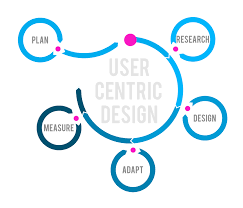The Rise of Artificial Intelligence Assistants
In recent years, artificial intelligence (AI) assistants have become an integral part of daily life for many people around the globe. From helping manage schedules to controlling smart home devices, AI assistants are revolutionizing how individuals interact with technology.
What Are AI Assistants?
AI assistants are software programs designed to perform tasks or services for individuals based on commands or questions. They utilize natural language processing and machine learning to understand and respond to user requests. Popular examples include Apple’s Siri, Amazon’s Alexa, Google Assistant, and Microsoft’s Cortana.
How Do AI Assistants Work?
The core functionality of AI assistants relies on advanced algorithms that process voice commands or text input. Here is a simplified breakdown of their operation:
- Voice Recognition: The assistant listens to the user’s voice through a microphone and converts it into text using speech recognition technology.
- Natural Language Processing (NLP): This step involves analyzing the text to understand the intent behind the user’s request.
- Task Execution: Once the command is understood, the assistant performs the task by accessing relevant data or controlling compatible devices.
- Response Generation: Finally, the assistant generates a response in natural language to communicate with the user.
The Benefits of AI Assistants
The growing popularity of AI assistants can be attributed to several benefits they offer:
- Convenience: They allow users to perform tasks hands-free, making it easier to multitask and manage time efficiently.
- Personalization: AI assistants can learn user preferences over time, providing customized responses and recommendations.
- Accessibility: They provide assistance for individuals with disabilities by offering alternative ways to interact with technology.
- Integration: Many AI assistants can connect with various smart devices, enabling seamless control over home automation systems.
The Future of AI Assistants
The future looks promising for AI assistants as advancements in machine learning and NLP continue to enhance their capabilities. We can expect even more sophisticated interactions and expanded functionalities in areas such as healthcare, education, and customer service. As these technologies evolve, they will likely become even more embedded in everyday life, transforming how we interact with our digital environments.
A key focus area will be improving privacy measures and ensuring secure data handling as these systems become more prevalent. Developers are continuously working on solutions that protect user information while maintaining high levels of service quality.
Conclusion
The rise of artificial intelligence assistants marks a significant shift in human-computer interaction. As they become smarter and more intuitive, they promise to make our lives easier by reducing routine tasks and providing intelligent support across various domains. Embracing this technology could lead us toward a future where digital assistance becomes an essential part of everyday life.
9 Essential Tips for Optimizing Your AI Assistant’s Performance and User Experience
- Provide clear and concise responses to user queries.
- Use natural language processing to understand user input better.
- Ensure data privacy and security measures are in place.
- Regularly update the AI assistant with new information and technologies.
- Offer personalized recommendations based on user preferences.
- Implement a user-friendly interface for seamless interaction.
- Integrate with other systems to enhance functionality.
- Provide options for users to give feedback and improve over time.
- Monitor performance metrics to assess effectiveness and make adjustments as needed.
Provide clear and concise responses to user queries.
Providing clear and concise responses to user queries is crucial for the effectiveness of an artificial intelligence assistant. When an AI assistant delivers straightforward answers, it enhances user satisfaction by reducing confusion and ensuring that users can quickly obtain the information they need. Clear communication also builds trust, as users feel confident that the assistant understands their requests and can provide accurate information. Additionally, concise responses help streamline interactions, making them more efficient and allowing users to accomplish tasks faster. By focusing on clarity and brevity, AI assistants can significantly improve the overall user experience.
Use natural language processing to understand user input better.
Natural language processing (NLP) is a crucial component in enhancing the effectiveness of artificial intelligence assistants. By leveraging NLP, these assistants can better understand and interpret user input, allowing for more accurate and context-aware responses. This technology enables AI systems to process human language in a way that is both meaningful and useful, bridging the gap between human communication and machine understanding. As a result, users can interact with AI assistants using natural, conversational language rather than relying on specific commands or keywords. This not only improves user experience by making interactions more intuitive but also broadens the range of tasks that AI assistants can perform effectively.
Ensure data privacy and security measures are in place.
When using an artificial intelligence assistant, it’s crucial to ensure that data privacy and security measures are firmly in place. These assistants often have access to personal information and sensitive data, making it essential to protect against unauthorized access and potential breaches. Users should verify that the AI platform employs robust encryption methods, regularly updates its security protocols, and complies with relevant privacy regulations. Additionally, reviewing privacy settings and permissions can help control what information is shared with the assistant. By taking these precautions, users can enjoy the convenience of AI assistants while safeguarding their personal data.
Regularly update the AI assistant with new information and technologies.
Regularly updating an AI assistant with new information and technologies is crucial for maintaining its effectiveness and relevance. As technology evolves rapidly, these updates ensure that the assistant can handle the latest tasks, understand current language trends, and provide accurate responses. By incorporating the most recent advancements in artificial intelligence and machine learning, users can benefit from improved performance, enhanced security features, and a broader range of functionalities. Additionally, staying up-to-date allows the assistant to learn from new data sources, keeping it informed about global events or changes in user preferences. This practice not only enhances user satisfaction but also extends the lifespan of the AI system by keeping it aligned with modern technological standards.
Offer personalized recommendations based on user preferences.
Offering personalized recommendations based on user preferences is a powerful feature of artificial intelligence assistants that enhances user experience and engagement. By analyzing past interactions, purchase history, and behavior patterns, AI assistants can tailor suggestions to meet individual needs and interests. This capability not only saves users time by providing relevant options but also increases satisfaction by delivering content and services that align with personal tastes. Whether it’s suggesting a new book to read, recommending a restaurant nearby, or curating a playlist for the user’s mood, personalized recommendations make interactions more meaningful and efficient. As AI technology continues to advance, the accuracy and relevance of these recommendations are expected to improve, further enriching the user experience.
Implement a user-friendly interface for seamless interaction.
Implementing a user-friendly interface is crucial for ensuring seamless interaction with artificial intelligence assistants. A well-designed interface simplifies the user’s experience, allowing them to communicate effortlessly with the AI system. This involves creating intuitive navigation, clear visual cues, and responsive design that adapts to different devices and user preferences. By minimizing complexity and reducing the learning curve, users can quickly and effectively engage with the assistant, enhancing overall satisfaction and productivity. Additionally, incorporating features such as voice commands and personalized settings can further streamline interactions, making technology more accessible to a diverse range of users.
Integrate with other systems to enhance functionality.
Integrating artificial intelligence assistants with other systems can significantly enhance their functionality and provide users with a more seamless experience. By connecting AI assistants to various platforms, such as smart home devices, calendars, email services, and even third-party applications, users can enjoy a centralized hub for managing different aspects of their digital lives. This integration allows for streamlined workflows; for instance, an AI assistant can automatically adjust home lighting based on calendar events or retrieve important emails while driving. Furthermore, it enables the assistant to gather contextual information from multiple sources, leading to more accurate responses and personalized suggestions. As technology continues to evolve, the ability of AI assistants to interact with an expanding ecosystem of devices and services will be crucial in maximizing their potential and utility in everyday life.
Provide options for users to give feedback and improve over time.
Allowing users to provide feedback on artificial intelligence assistants is crucial for enhancing their performance and user satisfaction. By offering options for users to share their experiences, suggestions, and concerns, developers can gather valuable insights into how the AI is functioning in real-world scenarios. This feedback loop enables continuous learning and adaptation, allowing the assistant to evolve and better meet user needs over time. Moreover, incorporating user input helps identify areas where the AI may fall short or require refinement, ensuring that updates are aligned with actual user demands. Ultimately, fostering a collaborative relationship between users and developers leads to a more effective and personalized AI assistant experience.
Monitor performance metrics to assess effectiveness and make adjustments as needed.
Monitoring performance metrics is crucial for assessing the effectiveness of an artificial intelligence assistant. By analyzing key indicators such as response accuracy, user engagement, and task completion rates, developers can gain valuable insights into how well the assistant is meeting user needs. This data-driven approach allows for the identification of areas that require improvement and helps in making informed adjustments to enhance functionality. Regularly reviewing these metrics ensures that the AI assistant remains efficient and continues to provide a high-quality user experience. Additionally, ongoing performance assessment can guide future updates and innovations, ensuring the technology evolves in line with user expectations and technological advancements.


